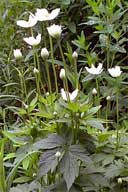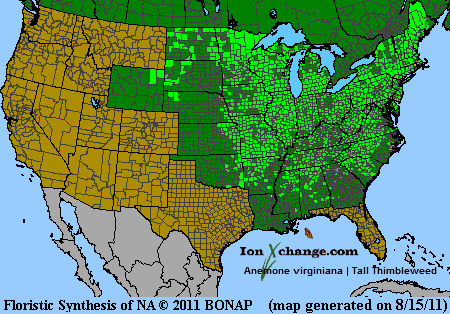 Loading... Please wait...
Loading... Please wait...- Home
- SEEDS
- SEED MIXES
- BUY PLANTS
- Info Request
-
Educational Videos
- Greenhouse Transplanting Demonstration
- Native Seed Cleaning demonstration at Ion Exchange Native Seed and Plant Nursery
- Attracting Butterflies
- Bidens - Bidens cernua Harvest Video
- Big Blue Stem Harvest
- Butterfly Milkweed Video
- Button Blazingstar - Liatris aspera Video
- Buttonbush - Cephalanthus occidentalis Video
- Canada Anemone - Anemone canadensis Harvest Video
- Cardinal Flower - Lobelia cardinalis Video
- Control Burn - Wildflower Field
- Cream Gentian - Gentiana flavida
- Culver's Root - Veronicastrum virginicum Video
- Cup Plant - Silphium perfoliatum Video
- Dormant Seeding | Planting
- Earthyman's Favorite Wildflowers Video
- Eco-Friendly Golf Course Seed Mix
- Floating Islands
- Fringed Loosestrife - Lysimachia ciliata Video
- Giant Yellow Hyssop - Agastache nepetoides Video
- Indiangrass - Sorghastrum nutans Video
- Iowa Prairie Partner Program
- Leadplant - Amorpha canescens (Potted) Video
- Meadow Blazingstar - Liatris ligulistylis
- Midland Shooting Stars - Dodecatheon meadii Video
- Native Plant Nursery Field Irrigation Experiment
- Nodding Onion - Allium cernuum Video
- Ohio spiderwort - Tradescantia ohiensis Video
- Old Man's Beard - Clematis virginiana blooms Video
- Oxeye Sunflower - Heliopsis helianthoides Video
- Prairie Spiderwort - Tradescantia bracteata
- Purple Coneflower - Echinacea purpurea Video
- Rain Garden or Water Garden Video
- Rattlesnake Master - Eryngium yuccifolium Video
- Riverbank Stabilization - Wetland Plants
- Rose Mallow - Hibiscus militaris Video
- Rosinweed - Silphium integrifolium Video
- Royal Catchfly - Silene regia
- Showy Tick Trefoil - Desmodium canadense Video
- Sneezeweed - Helenium autumnale Video
- Swamp Betony - Pedicularis lanceolata Video
- Swamp Milkweed - Asclepias incarnata Video
- Sweet Blackeyed Susan - Rudbeckia subtomentosa Video
- Tall Coreopsis - Coreopsis tripteris Video
- Urban Butterfly Garden
- Wild Bergamot - Monarda fistulosa Video
- Wild Geranium - Geranium maculatum Harvest
- Wild Goldenglow - Rudbeckia lanciniata Video
- Wild Petunia - Ruellia humilis Harvest Video
- Woodland Knotweed - Polygonum virginianum Video
- Yellow Coneflower - Ratibida pinnata Video
- Blog
- Resources
- Policies
Contact Us
Phone:
563-419-0837
or 563-535-7231
Email:
hbright@ionXchange.com
Browse Products
Add to Wish List
You Recently Viewed...
Our Newsletter
Product Description
Tall Thimbleweed (Anemone Virginiana) A. virginiana, A. cylindrica and A. riparia are all very similar. Ironically, "Tall Thimbleweed" is the one of the three species that is the shortest, reaching only about three feet in height. It also tends to be the hairier of the three. The most distinguishing characteristic of A. virginiana is the shape of the leaf-blade segments. They tend to curve toward the base of the plant. Blooms from June through August in rocky sites among the woodlands from Quebec to North Dakota and southward to Georgia, Alabama, Arkansas and Kansas.
Anemone from the Greek term anemone, meaning "wind" which probably refers to seed distribution or perhaps because the delicate stems and leaves sometimes appear to tremble in the wind and virginiana meaning "of Virginia.
| Sun Exposure | Savanna, Prairie, Woodland |
| Soil Moisture | Mesic, Dry Mesic |
| Bloom Time | Spring, Summer June, July, August |
| Bloom Color | White |
| Max. Height | 2 - 3 feet |
| Wetland Code | UPL |
| Germ Code | A |
| Seeds Per Packet | 300 |
| Seeds Per Ounce | 28,000 |
The root and seeds are astringent, emetic and expectorant. A decoction of the roots was used in the treatment of TB, whooping cough and diarrhoea. The root is pulverised and used as a wet poultice in the treatment of boils.
Medicinal Uses:
The root and seeds are astringent, emetic and expectorant. A decoction of the roots was used in the treatment of TB, whooping cough and diarrhoea.
The root is pulverised and used as a wet poultice in the treatment of boils.












